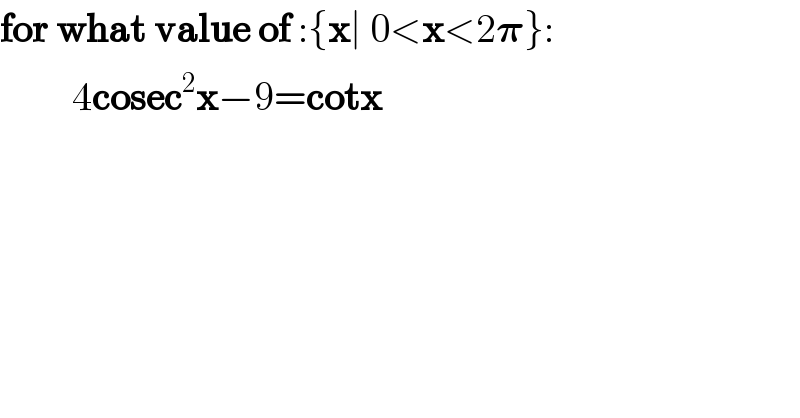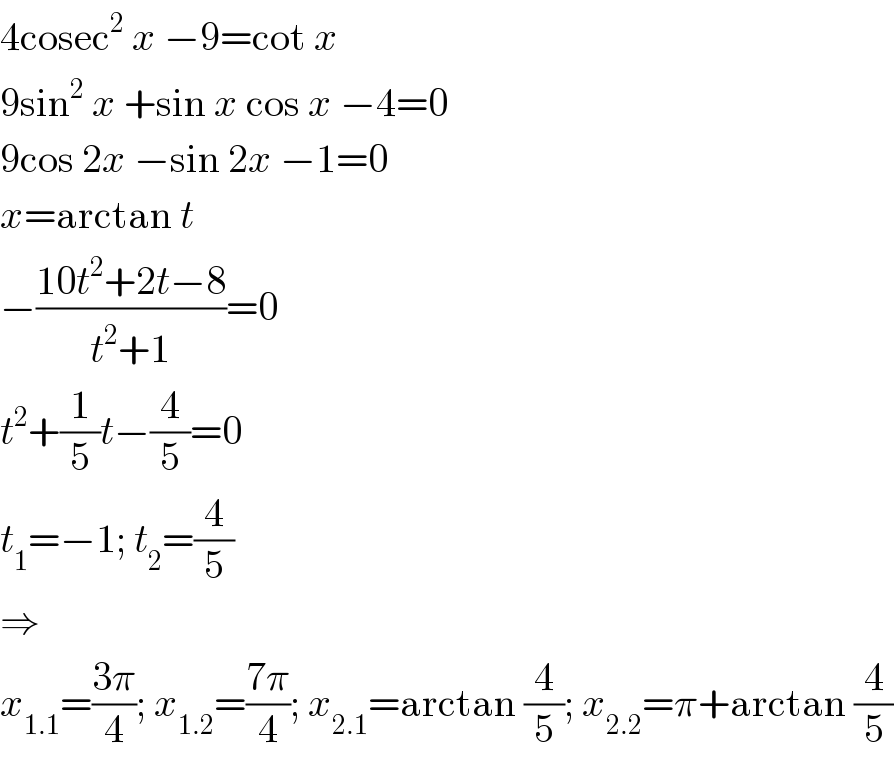
Question and Answers Forum
Question Number 98191 by behi83417@gmail.com last updated on 12/Jun/20

Answered by MJS last updated on 12/Jun/20

Answered by 1549442205 last updated on 12/Jun/20
![we have (4/(sin^2 x))−9=((cosx)/(sinx))⇔4(1+cot^2 x)−9=cotx 4cot^2 x−cotx−5=0⇔(cotx+1)(4cotx−5)=0 a/cotx+1=0⇔cot x=−1=cot((3π)/4)⇒x∈{((3π)/4);((7π)/4)} a/4cotx−5=0⇔cotx=(5/4)⇔tanx=(4/5) ⇒x∈{arctan(4/5);arctan(4/5)+π} Thus,the roots in interval [0;2π] of given equation are:x∈{((3π)/4);((7π)/4);arctan(4/5);arctan(4/5)+π}](Q98202.png)
Commented bybehi83417@gmail.com last updated on 12/Jun/20

